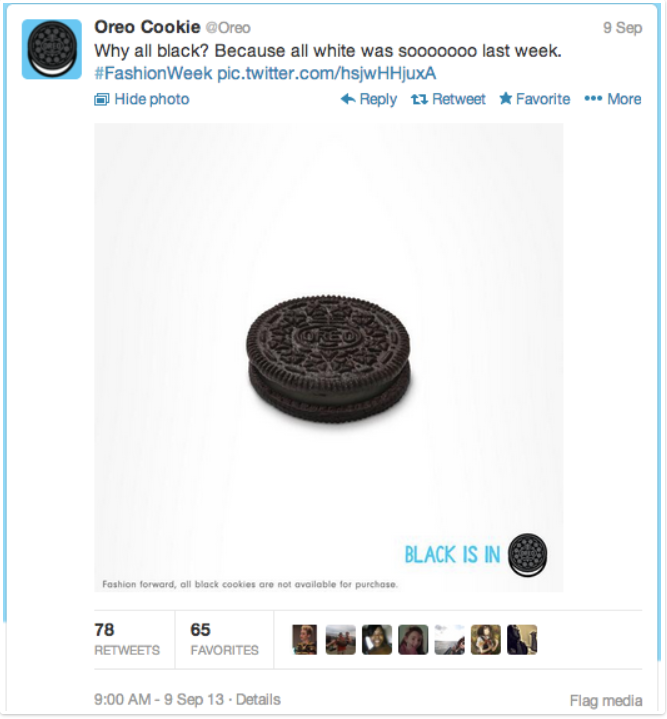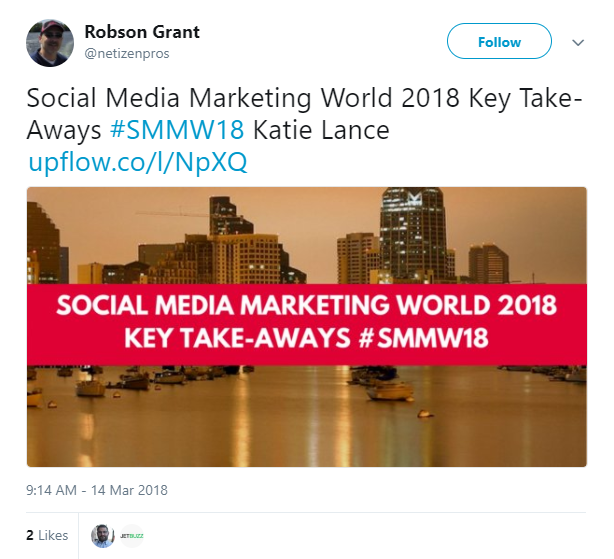Do you use hashtags — catchy, attention-grabbing conversation anchors that people want to be associated with? If not, you can learn how here.
Hashtag 101– If you already know what hashtags are, skip this part and proceed to advanced hashtag uses below.
How hashtags work: When you use a #hashtag, you are adding your post to a list of all other posts that use this tag on that social platform.
For example, if you post a picture of your dog with #puppy in the caption or description, your post is now grouped with all other #puppy posts. Whenever someone searches #puppy on instagram for example, they will see all #puppy posts.
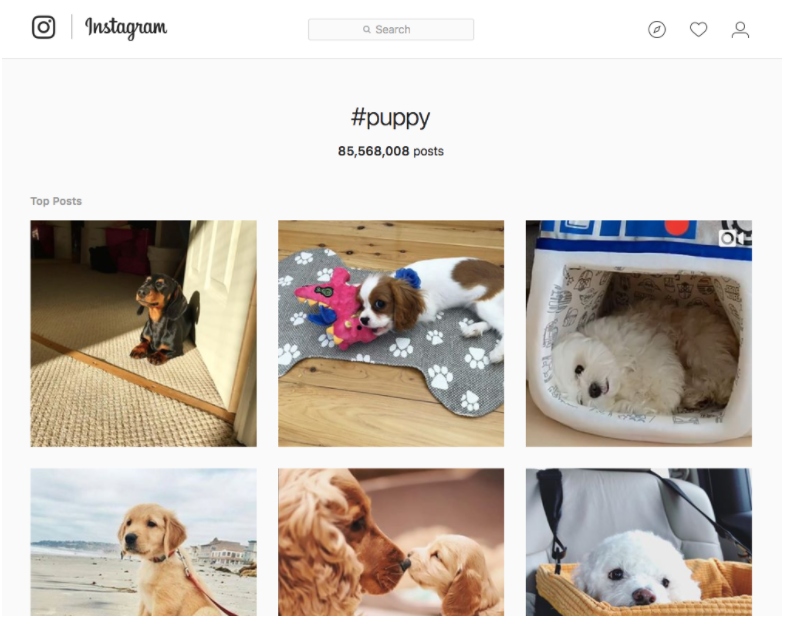
Popular hashtags are a major deal. They engage social media users on a higher level.
No wonder Instagram images or videos with at least one hashtag generate 12.6% more engagement than posts without hashtags, and tweets with hashtags receive 2x more engagement than tweets without them.
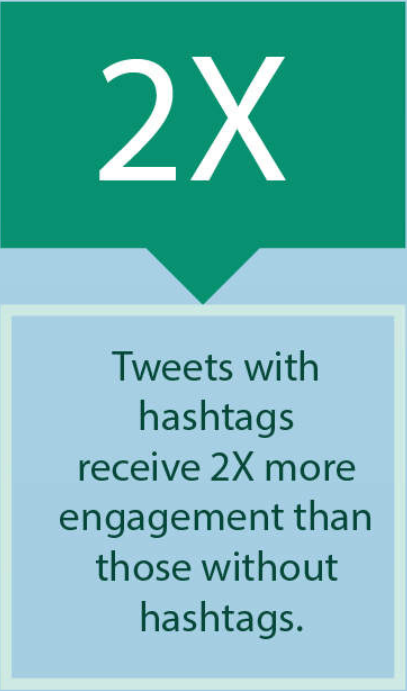
This doesn’t mean hashtags are an automatic ticket to social media success, but they can and do engage people by allowing them to become part of something larger than themselves.
Hashtags impart a sense of belonging — and encapsulate people’s beliefs, cultures, and professional brands. In an article on Salesforce, expert digital marketer Ann Smarty listed three hashtags that people follow for news on social: #twitternews, #socialmedianews and #socialmedia.
When people use or follow hashtags like these on social, they get to feel they’re a part of some huge; that’s the power of hashtags.
There are two main ways to use popular hashtags to grow your business:
- Start your own branded hashtag and make it popular. Or…
- Latch onto already popular unbranded hashtags and exploit them to grow your business. The three hashtags I mentioned from Ann Smarty are good examples of unbranded hashtags.
I’ll be sharing how to use these two different hashtag types to grow your business in this post.
Ready?
Table of Contents
- Let’s begin with unbranded hashtags.
- 1. Look out for CTA (Call-to-Action) hashtags
- 2. Twitter trending keywords and hashtags
- 3. Popular niche hashtags
- Now, branded hashtags.
- 1. Require customers to use your brand hashtag to qualify for entry to promos and contests
- 2. Ask event attendees to share, using your hashtag before and during the event
- 3. Get people to like your hashtagged tweets and posts
- Conclusion
These are usually popular hashtags that weren’t necessarily started by your brand.
They’re often industry hashtags like #marketing, event hashtags like #SXSW or day-related hashtags like #MusicMonday or #TuesdayInspiration. These are the basics. Tagging your posts with relevant industry, event and day-related hashtags will help you be a part of key conversations for your brand.
Here are three more advanced strategies for using unbranded hashtags to grow your business:
Just as its name implies, CTA hashtags encourage people to take an action. Example: #BeYourOwnBoss or #StartABusiness.
These hashtags tend to work well because they encourage people to participate in something fun or rewarding — and everyone likes fun and rewards. More importantly, they persuade people to take an action on your tweets or posts.
You want to look for popular CTA hashtags that are related to your brand or product and engage prospects with them. These hashtags are especially rampant on Instagram and Twitter.
Example: Call-to-action hashtag #tagafriend skyrocketed Twitter engagement for Chocolate Picture:
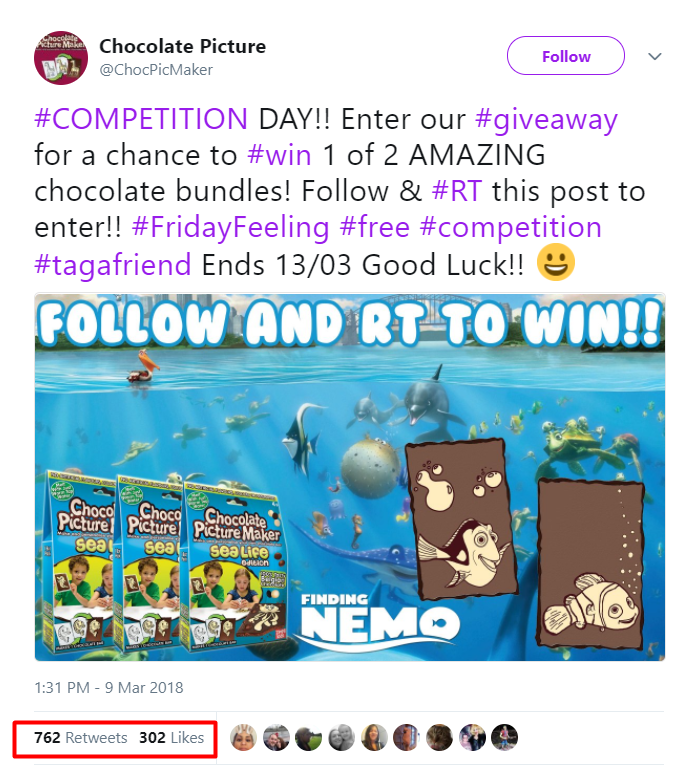
Of course, it wasn’t just the #tagafriend hashtag that drove this level of engagement for the brand. Chocolate Picture added some other hashtags and, perhaps more importantly, asked tweeters to follow and RT to get a chance to win the contest promoted in the tweet, which contributed to the success of the tweet. (Note: while hashtag functions are available on most platforms, they are particularly effective only on Twitter and Instagram)
The CTA hashtag #tagafriend, however, encouraged people to take an action — tag their friends.

Plus, the CTA hashtag exposed the tweet to an audience that follows the #tagafriend hashtag and who may not have heard about Chocolate Picture before.
Twitter gets over 300 million users per month, and the platform has a section called Trending. On a smartphone, Twitter Trending can be found once you click the search tab in your Twitter app. And it’s either on the left or right side of your desktop screen.
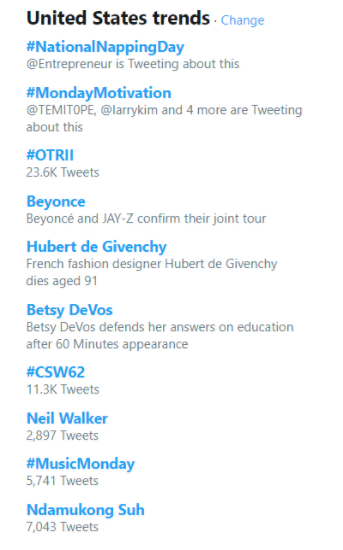
These keywords and hashtags represent what people are talking about at any given time on the platform. You can see how this easily creates an opportunity for you to chip in your tweets on the matter discussed, and expose your brand to a new audience.
How you chime into these trending conversations, however, can make or break engagement for your tweet. Your tweet needs to be timely and relevant to the topic being discussed. Any irrelevant or untimely tweets will be ignored by tweeters and get buried under other tweets.
This doesn’t mean you can’t participate in conversations outside your industry; you can, but you need to ensure it’s relevant to the topic being discussed.
Example: when #FashionWeek was trending, sometime in 2013, cookie brand Oreo sent out a tweet with the hashtag:
Oreo has nothing to do with fashion or Fashion Week; they’re clearly not a clothing brand, but they promoted their brand using the hashtag while making sure it’s related to the topic being discussed. Pretty clever.
Remember, Twitter trending tweets can stop trending at any time — they might be popular anywhere between minutes to a few days. You want your entry into trending conversations to be relevant and timely.
Another classic example is how duo music band Facing West took advantage of #MusicMonday on Twitter. The band used the hashtag to promote their new song on a Monday — March 5 — when the hashtag was trending:
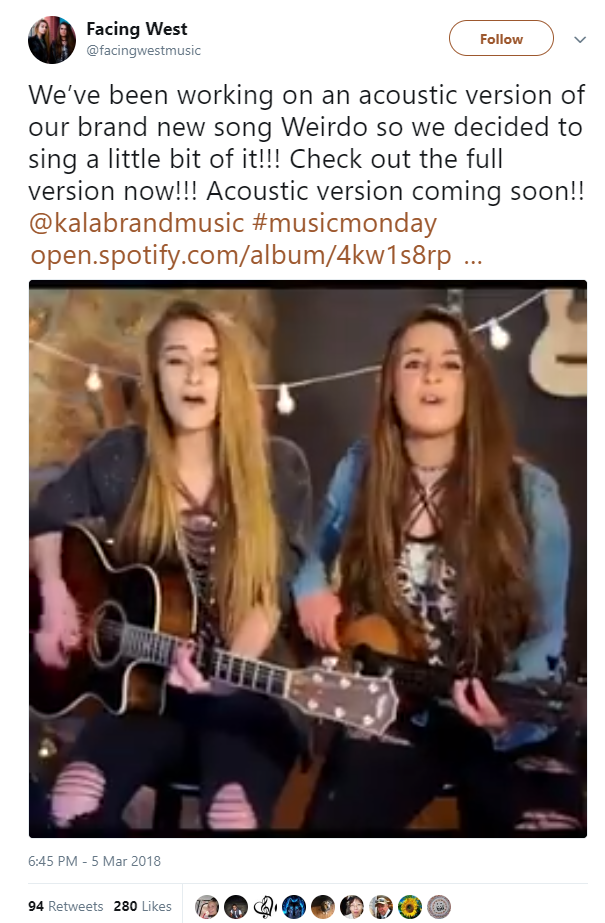
This exposed their brand and music to a new audience and enthusiasts who follow the hashtag.
Twitter users use the Twitter Trending to stay abreast of what’s hot right now. They want to be in the know and not the last person to hear about some hot news. Do your brand a huge favor by chiming in on trending conversations and taking advantage of the lively engagement there.
Hashtags are crazier on Instagram than they are on Twitter, or any other social platform for that matter.
“…consider using popular hashtags like #tbt (throwback Thursdays) or #instagood (a showcase of a user’s best photos) to attract new followers. — Bryan Kramer“
Using more than two hashtags on Twitter can make your engagement rate plummet. But on Instagram, the more hashtags, the merrier your engagement.
Head of Social Strategy at Canva, Peg Fitzpatrick, recommends adding your hashtags in multiple comments under each Instagram post:
You can use up to thirty hashtags on each post. I’d recommend sticking to three or four in the comments and then adding more into a comment below. It seems strange, but this is acceptable on Instagram.
If you want to use eleven hashtags in total per post, that works best on Instagram.
Enter niche hashtags. These hashtags are often used by people who are not just in your industry, but are in the same niche with you.
For example, #foodstagram is used by everyone and every business in the food/restaurant industry on Instagram. But a niche hashtag in the same food industry would be narrower. Take #foodblogger; the hashtag is apparently used by food bloggers on the platform, not every Tom, Dick, and Harry in the industry:
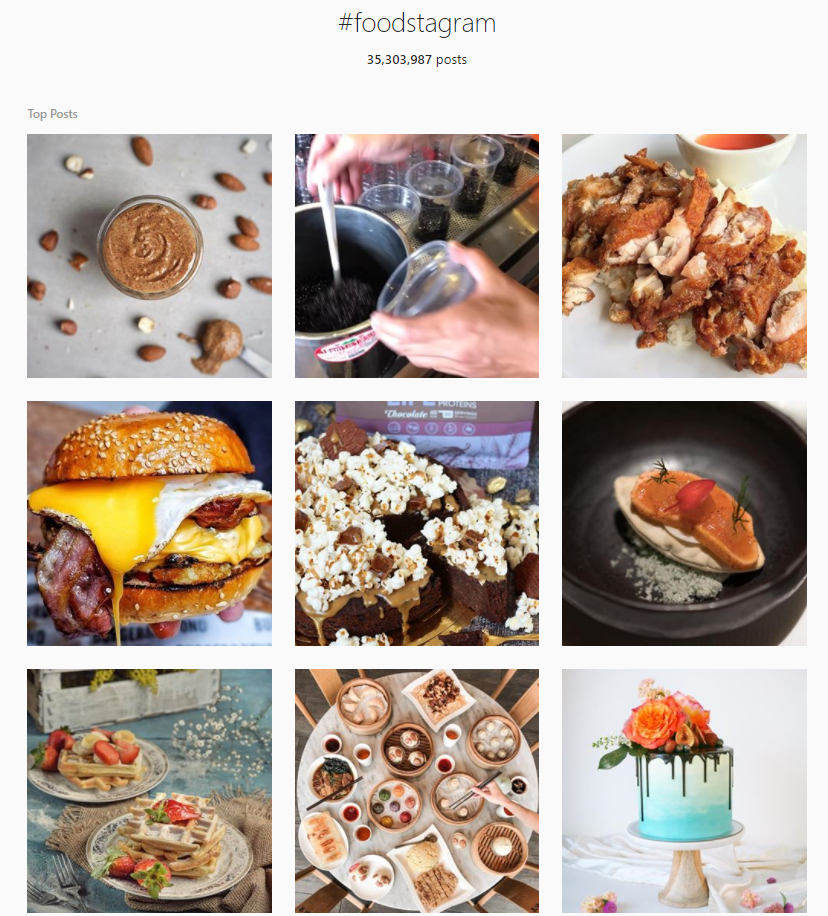
Instagrammers who are interested in seeing pictures from food bloggers — but not restaurants or random food lovers — they’ll use the #Foodblogger hashtag to narrow down their search that finds just the food bloggers they’re looking for.
Your industry hashtags are often used by everyone in the industry, so they naturally get more impressions than niche hashtags. But you want to use niche hashtags to engage with your own target customers.
To see what hashtags are relevant to your specific industry of brand, tools like Keyhole can be very helpful. You can insert a trending #hashtag or keyword into our tracker, and the Word Cloud feature within the main dashboard will show you what other hashtags or Keywords people are using along with it.
For instance, our WordCloud shows that when using #foodblogger, people also use these hashtags:

These are hashtags started by your company. You know, the one you can lay a 100% claim to and enjoy all the benefits.
Branded hashtags don’t have to have your brand name in them, even though they sound like they should. But they should be related to your product or campaign name — so customers can link the hashtag to your business ultimately.
And if done right, they can become very popular hashtags that will take your brand to a higher level. Here are three strategies for growing a business with branded hashtags.
1. Require customers to use your brand hashtag to qualify for entry to promos and contests
This is one of the most common hashtag marketing strategies out there. You start a contest and require target customers to use your hashtags in their posts to qualify for the contest.
It’s like you’re starting a party and you’re asking everyone to come and eat. Everyone loves free food and drinks, right? That’s the idea.
Where it gets a little difficult is coming up with the perfect hashtag that people can relate to your business. One of the most successful branded hashtag so far is #ShareACoke — though, it wasn’t exactly a contest as we’re discussing here.
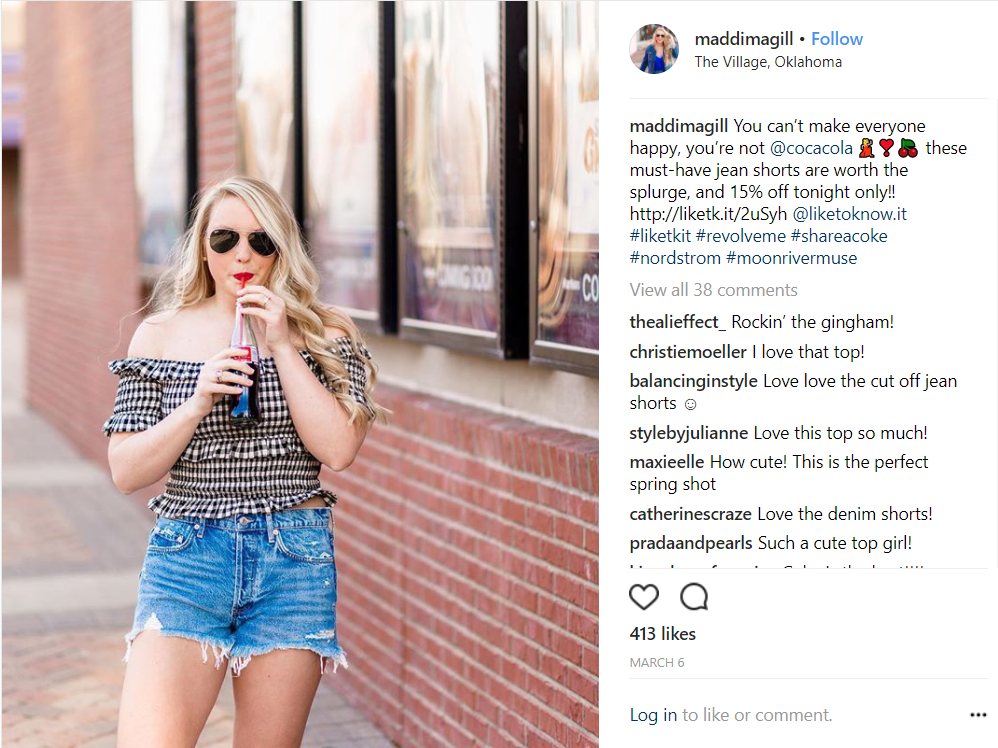
Three things make this hashtag awesome:
- The hashtag is simple, which makes it memorable.
- It clearly flaunts the brand’s name.
- It’s a call-to-action (CTA) hashtag — as it encourages people to take an “fun” action, share a coke.
You can learn from this and make an effective and memorable hashtag for your business. Make it reflect your brand name clearly, make it simple and make it a CTA — you know, like #DoSomethingFun.
To get even more juice from this, you can ask contest participants to tag your business handle in their entries.
This may reduce the amount of people participating in your contest since you’ll be stressing them more by asking them to do more tasks. But you’ll be getting more bang from your investment — 54% of users surveyed by Twitter reported that they had taken action after seeing a brand mentioned in Tweets (including visiting their website, searching for the brand, or retweeting content).
In plain English, you get more ROI when users tag your brand in their entries for your contest or promos.
If you’re organizing an event, you can create a hashtag and ask your event attendees to share the post on social using your event’s hashtag. Andy Crestodina of Orbit Media Studios says it’s best to announce your event hashatag right at the start of the event:
“Tell the audience about it before the opening keynote.”
This means that you must have planned this hashtag ahead of time — it should have been ready long before the event day. In fact, planning it out long before the D-day gives it greater chance for good publicity.
Before the popular Social Media Week starts in every country, the #SMMW18 hashtag always has enough time to get in the hands and consciousness of people. Perhaps that’s because the hashtag has been planned and publicized months or weeks before the event starts.
And it’s one of the main reasons why virtually all marketers in many countries don’t miss out when the event date finally hits.
The beauty of this is that once multiple people start tweeting with your hashtag during an event, Twitter notices the spike for that hashtag and adds it to their Trending list — which exposes your hashtag to Twitter users who like hot news.
This means more people will be seeing your hashtagged posts. It can lead to a massive explosion and brand awareness for you. And you may also attract people who haven’t heard about you or your hashtag before. They can become curious as to who you are why you’re trending on their Twitter.
3. Get people to like your hashtagged tweets and posts
Social networks want to feed their users with the best content their platforms offer. And it’s the same for your business. You want your best content consistently visible for optimal customer engagement.
Google, YouTube, and most other platforms also operate in this way. They all have top posts in a category on their platforms so more users can find them. When your tweets or Instagram posts get significant engagement, they are ranked in the top sections of the platforms they’re on for the hashtag(s) they contain.
For example, if your your post on Instagram with #musicmonday gets healthy engagement, say 200 likes and 20 comments, it can get ranked on the top posts section of Instagram.
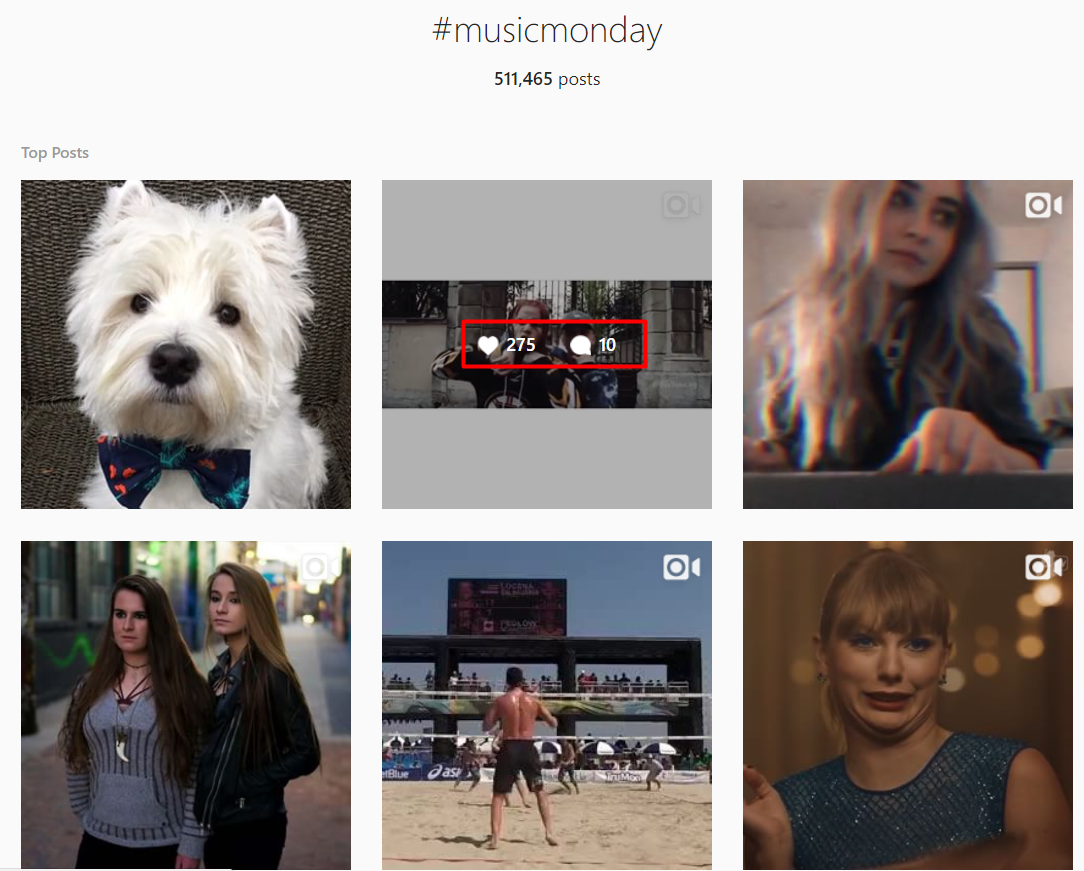
If you’re already a popular brand, your hashtagged posts will naturally get hundreds and thousands of Likes or Favs, retweets, and replies in no time. And this will move your posts to the top sections of social networks. And, to amplify your reach, you may use influencers.
But if your brand is not so popular yet, you need to go to a little more work. You especially need influencers who will spread the word about your brand and hashtag. Ask your network — existing followers, customers and friends — to Like your posts so they reach more people.
Conclusion
Popular hashtags are a big deal. They raise an entire village of brand advocates, like what’s happening with Coca-Cola’s #shareacoke today.
The drink company is still enjoying all the brand awareness and sales that come from the hashtag, as many of their customers are eager to take fancy pictures with a bottle of coke and share it on social using the hashtag. It’s the same for every other brand that has worked to create popular hashtags.
Businesses that latch on to unbranded hashtags they didn’t create themselves also enjoy some level of success as seen with the Oreo example above. In the end, whether you create your brand hashtag or latch on to unbranded hashtags you didn’t create, your business is bound to see an uptake in engagement and sales if you hit the right combination.
Take a chance and experiment with hashtags. Learn to capitalize on what’s trending and help your business by becoming part of the hashtag trend.

